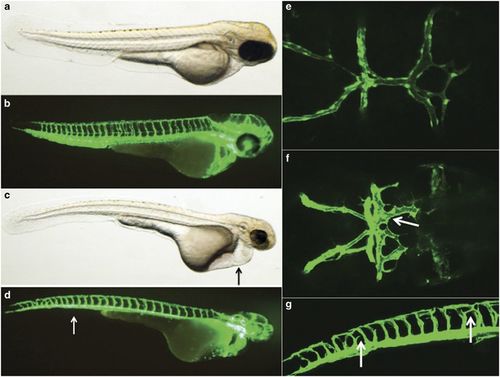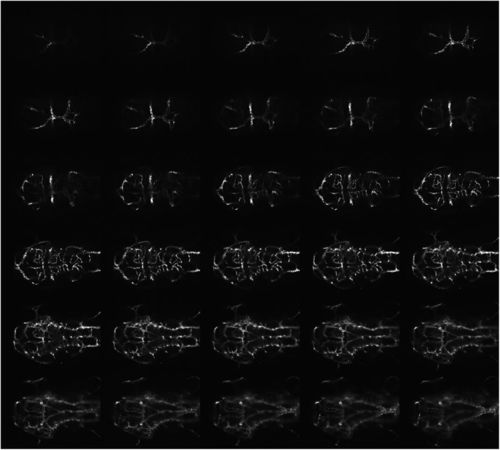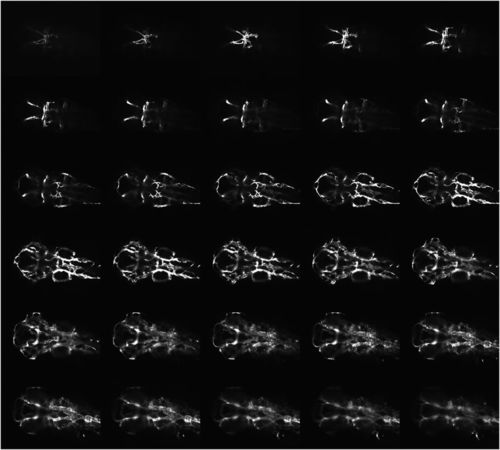- Title
-
Identification of a rare BMP pathway mutation in a non-syndromic human brain arteriovenous malformation via exome sequencing.
- Authors
- Walcott, B.P., Winkler, E.A., Zhou, S., Birk, H., Guo, D., Koch, M.J., Stapleton, C.J., Spiegelman, D., Dionne-Laporte, A., Dion, P.A., Kahle, K.T., Rouleau, G.A., Lawton, M.T.
- Source
- Full text @ Hum Genome Var
|
Zebrafish modeling of the SMAD9 mutation. Zebrafish morphants resulting from an injection of a translation blocking morpholino were created and imaged with a confocal microscope at 68?72?h post fertilization. Uninjected (a) light and (b) confocal lateral imaging of Tg(kdrl:eGFP) embryos was performed; the embryos were oriented laterally, cranial-right. Comparative images of SMAD9 knockdown (c, d) were typified by smaller heads, smaller eyes and thin trunks. The embryos also demonstrated cardiac edema (c, arrow) and had a near-absence of the caudal vein plexus (d, arrow). Cranial circulation was also imaged in uninjected (e) and morphants (f) with embryos oriented dorsal, cranial-right. Numerous abnormal arteriovenous connections between the dorsal longitudinal vein, mesencephalic vein and metencephalic artery were present (arrow). Further evidence of abnormal artery?vein specification during development was observed in the intersegmental vessels, where ectopic branches (g, arrow) were observed above the myoseptum. PHENOTYPE:
|
|
Wild-type control imaging of zebrafish cranial circulation. Reference confocal source dataset images of cranial circulation in a representative uninjected Tg(kdrl:eGFP) zebrafish embryo at 72?h post fertilization. |
|
SMAD9 zebrafish morphant cranial circulation. Confocal source data set images of the cranial circulation in a representative SMAD9 translation-blocking morpholino-injected Tg(kdrl:eGFP) zebrafish embryo at 72?h post fertilization. In addition to the numerous abnormal arteriovenous connections previously observed in Figure 4f, other cerebrovascular changes were also present. There was a paucity of central arteries that penetrate the hindbrain and usually connect the basilar artery and posterior hindbrain channel. The lateral dorsal aorta was also significantly dilated and irregular. PHENOTYPE:
|

Unillustrated author statements |



